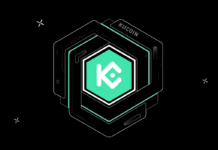Bybit, the world’s second-largest cryptocurrency exchange by trading volume, has released its latest Bybit Crypto Insights report, analyzing the growth of decentralized perpetual exchanges and how Aster has emerged as a competitor to Hyperliquid.
Bybit has entered the onchain DEX race with Byreal, a Solana-based decentralized exchange now in beta and set for mainnet in early October. According to DefiLlama, Byreal has recorded more than $335.41M in cumulative trading volume since its beta launch, with daily volume peaking at $28.15M. TVL reached a high of $14.22M. Byreal uses hybrid liquidity models, including RFQ and CLMM mechanisms, to reduce slippage and curb MEV.
The Rise of Aster
Aster was formed from the merger of Astherus and ApolloX and launched in September with a token that surged more than 300 percent in hours. The ASTER token reached a $1.33 billion market cap within two days. Aster’s features include MEV-free execution, hidden orders and dual trading interfaces designed for both retail and professional users. Plans for a zero-knowledge-powered chain and integration with the Binance ecosystem have strengthened its early positioning.
How Aster stacks up against Hyperliquid
Hyperliquid remains the leading decentralized perp DEX, recording about $200 billion in September trading volume compared with Aster’s $20 billion. Its market capitalization is estimated at $13.2 billion, while Aster’s is about $2.5 billion.
The two platforms reflect contrasting strategies. Hyperliquid built its own Layer 1 infrastructure with HyperBFT consensus and sub-second finality, delivering centralized exchange-like execution entirely on chain. Aster was mainly launched on BNB Chain with a modular design and emphasizes ecosystem integration, branding and token-driven growth.
How is Hyperliquid different from dYdX/GMX?
Legacy platforms such as dYdX and GMX emphasize decentralization as a core principle. By comparison, newer players like Hyperliquid and Aster prioritize speed, liquidity and user experience. Both sacrifice a degree of decentralization in favor of performance.
Hyperliquid and beyond
Bybit’s report notes that ideals such as trustlessness and community governance are taking a back seat to execution and user experience. Hyperliquid has long been the sector’s benchmark, having developed a blockchain optimized for trading, with fully on-chain matching and sub-second settlement.
Aster, however, has gained visibility not by building new infrastructure but by capturing attention through narrative, exchange backing and incentives. Its rapid rise illustrates how token launches, partnerships and endorsements can shift market dynamics.
The road ahead
The report concludes that decentralized perpetual DEXs are evolving into a model where decentralization is treated as a feature rather than a foundation. With centralized exchanges capable of launching their own versions, competition is expected to increase.
Hyperliquid, once seen as untouchable, now faces an existential challenge. Its infrastructure remains strong, but the market increasingly rewards storytelling, ecosystem incentives and cultural resonance alongside technical performance.
Read more about Aster’s emergence, Hyperliquid’s position and the evolving landscape of decentralized perpetual exchanges in the Bybit Crypto Insights Report: The rise of decentralized perp DEXs: How Aster matches Hyperliquid.





